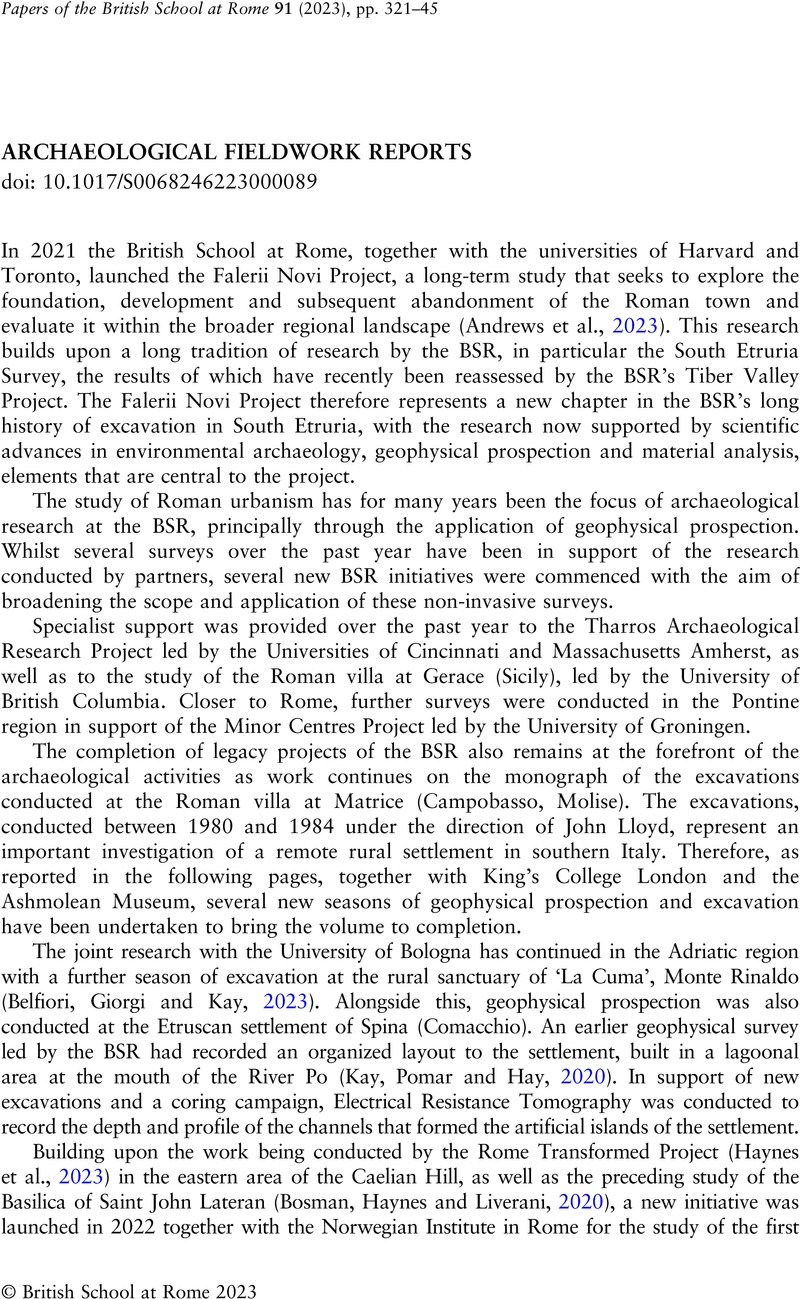Belfiori, F.,
Giorgi, E. and
Kay, S. (
2023) Archaeological excavations of the western side of the sanctuary of Monte Rinaldo (Comune di Monte Rinaldo, Provincia di Fermo, Regione Marche).
Papers of the British School at Rome 91.
10.1017/S0068246223000132CrossRefGoogle Scholar 